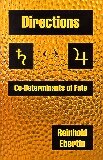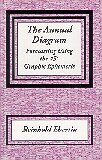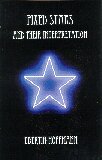
|
The Astrology Center of America, 207 Victory Lane, Bel Air, MD 21014 Tel: 410-638-7761; Toll-free (orders only): 800-475-2272 |
|||||||
|---|---|---|---|---|---|---|---|
| Home | Author Index | Title Index | Subject Index | Vedic Books | Tarot | E-Mail: | |
 |
Reinhold Ebertin |
 his son, Baldur |
Reinhold Ebertin, 1901-1988, came to Uranian astrology, and, according to the story, was denied permission to use the new Transneptunians in his work. So he reduced the Uranian system to the 90 degree dial, 45 degree graphic ephemeris and half sums (eg, midpoints). His use of these materials was brilliant. For those of you who don't know what these 45 or 90 degree things may be, the short answer is that they are methods of reducing all hard aspects to conjunctions on a wheel or graph. By means of this simplification, a powerful means of analysis was created. Here is what we think is a complete list of his available books: |
 Indicates a book on our Top Ten list. If you would like to find more books like it, click on the star.
Indicates a book on our Top Ten list. If you would like to find more books like it, click on the star.
Have you read any of these books? Are you a fan of Reinhold Ebertin? Want to tell the world about them?
 |
||

|
||
 |
||

|
||
 |
||

|
||

|
||
 |
||
 |
||
 |
||

207 Victory Lane, Bel Air, MD 21014
Tel: 410-638-7761; Toll-free (orders only): 800-475-2272
| Home | Author Index | Title Index | Subject Index | Vedic Books | Tarot | E-Mail: |
Established 1993, The Astrology Center of America is owned & operated by David Roell.
This entire site (AstroAmerica.com) is copyright 1996, 1997, 1998, 1999, 2000 by William R. Roell.
All rights reserved.